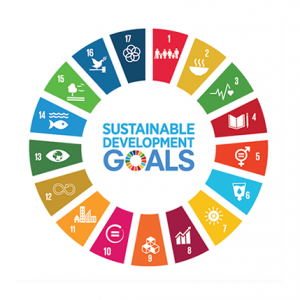Getting Started
Getting Started with ESD – A quick guide
The UN Sustainable Development Goals (SDGs) can provide a useful lens for aligning content in your module or programme with broader societal challenges. As a lens, the SDGs can enable teaching staff to:
- Demonstrate ways to advance sustainability from a discipline
- Frame inter- and transdisciplinary discussions
- Highlight issues of local and regional concern
- Connect the curriculum to global issues and expand students’ world views
Global challenges such as climate change, mass human migration or biodiversity loss connect with a number of SDG targets which demonstrates the need for inter or transdisciplinary responses. The SDGs provide a common language and an action-oriented framework to bridge the gaps between academic disciplines and create partnerships amongst governments, business sectors and educational institutions.
Quality Education (Goal 4), and in particular target 4.7, is particularly instructive for this toolkit: SDG4 represents a key mechanism for achieving all of the SDG goals.
SDG Target 4.7
By 2030 ensure all learners acquire knowledge and skills needed to promote sustainable development, including among others through education for sustainable development and sustainable lifestyles, human rights, gender equality, promotion of a culture of peace and non-violence, global citizenship, and appreciation of cultural diversity and of culture’s contribution to sustainable development.
- Understand the principles of sustainability
Sustainability, sustainable development and ESD are contested concepts and this can be frustrating for academics trying to incorporate them into their teaching. However, lecturers need to have some understanding of the main components of environmental, social and economic sustainability in order to embed them. An overview understanding of the SDGs is the best place to start exploring sustainability.
Practical pointer: Read the Education for Sustainable Development guidance produced by Advance HE which can be found in the resources section of this site
- Identify the key sustainability issues in your discipline
Once you have a general understanding of sustainability, sustainable development and ESD, think about the key issues in your discipline and how they might be linked with sustainability. Virtually all disciplines and subject areas can make a contribution to ESD in some way and benefit from introducing an ESD dimension. For example, corporate responsibility in Business, the life-cycle of materials in Engineering, industrial symbiosis in Manufacturing or global energy policy in International Relations.
Practical pointer: Find out what is already going on in your discipline within and beyond the University. You might start with reviewing the curriculum and identifying where sustainability concepts are already present, noting further opportunities to embed them.
- Embed opportunities for students to develop sustainability competencies
In order to negotiate complex and interdisciplinary sustainability issues, students need to develop sustainability skills and competencies. These include problem solving using holistic and systemic approaches, making critical judgements on real life issues, applying theory to practice and vice versa, and working collaboratively and in interdisciplinary teams. ESD aims at developing competencies that empower individuals to reflect on their own actions, taking into account their current and future social, cultural, economic and environmental impacts, from a local and a global perspective
Practical pointer: Many sustainability skills can be promoted regardless of subject matter through pedagogy. It is also worthwhile considering how your discipline equips students to deal with ‘wicked problems’ and evaluating how this can be embedded or improved.
- Utilise sustainability pedagogies
There are a number of general principles regarding teaching and learning about sustainability all of which involve student-centred and interactive enquiry-based approaches. These include participatory and inclusive learning processes, transdisciplinary collaborations, experiential learning and the use of local environment and community as learning resources. Situating ESD competencies central to curricula can transform how staff and students view issues related to SD. This can lead to both parties questioning their own and societies’ ways of thinking, ways of practicing and ways of being, which is central to a transformational learning experience. This can be unsettling at first, but is the start of a transformative journey that can lead to a more sustainable future.
Practical pointer: Consider material you already deliver and explore how making changes to its delivery might enhance sustainability skills in students.
- Experiment with interdisciplinarity
The multi-faceted nature of many sustainability issues invites interdisciplinary approaches to teaching and learning. This poses challenges for HE which primarily remains structured around disciplinary and compartmentalised structures.
Practical pointer: Talk to lecturers in other disciplines to share ideas about integrating sustainability into teaching and consider joint activities or extra-curricular events. Alternatively you could set up learning activities which encourage students to consider phenomena from different disciplinary perspectives.
- Use the informal curriculum to enrich your teaching
Students may have valuable sustainability relevant experiences related to the campus or to extra-curricular activity such as volunteering or work-experience. Making explicit links between the formal and informal curriculum can broaden students’ experience and perceptions of sustainability.
Practical pointer: Link informal learning to the formal curriculum through designing co-curricular activities which bridge the formal and informal spheres.
- Influence others – become part of the University’s sustainability community
Becoming a staff Sustainability Champion will enable you to share ideas and best practice with academic and professional staff across the University, identify opportunities ofr collaboration and use the platform to celebrate successes.
Practical pointer: Read the Sustainability Strategy to find out about the University’s whole institutional approach to sustainability. Find out more about our Future proof staff engagement programme and how to become a sustainability champion.
